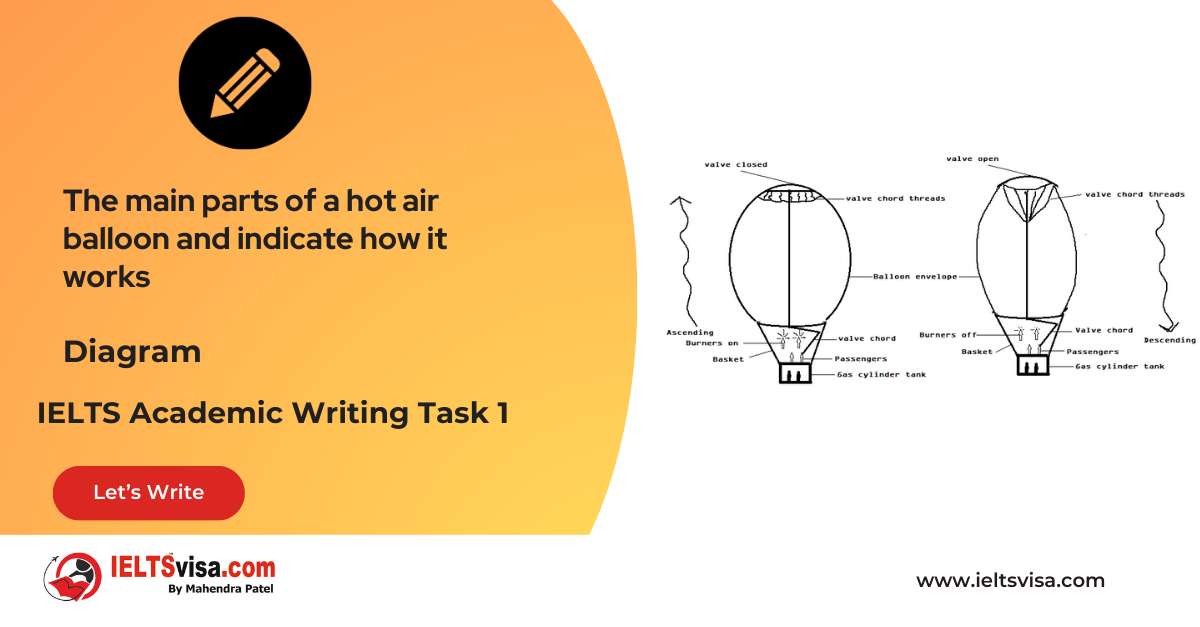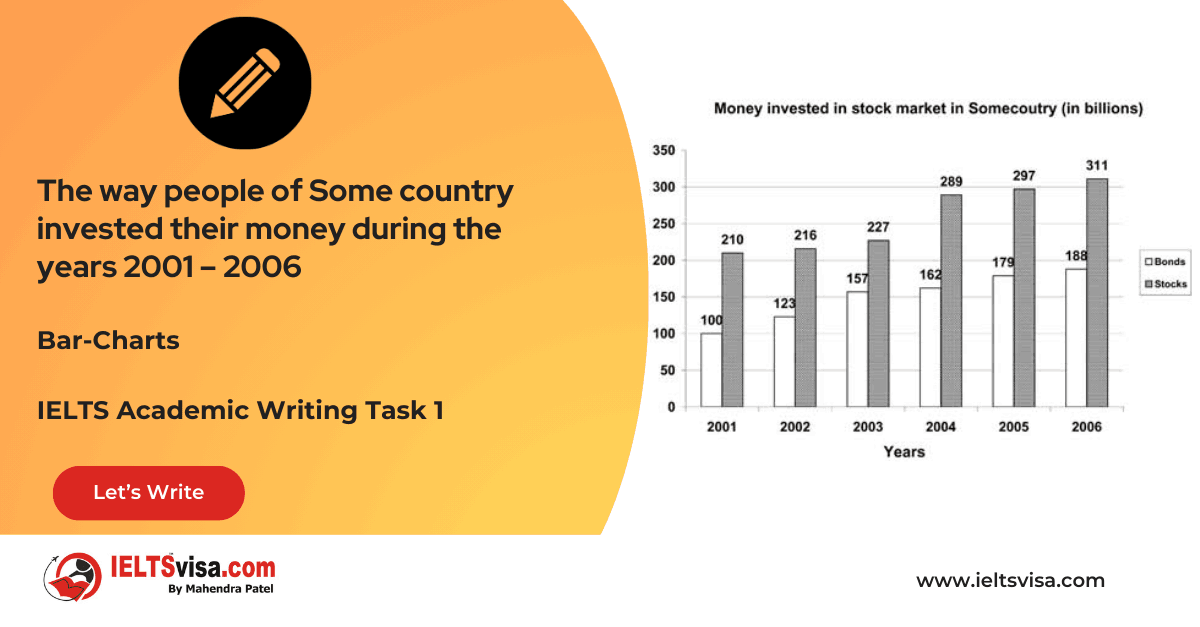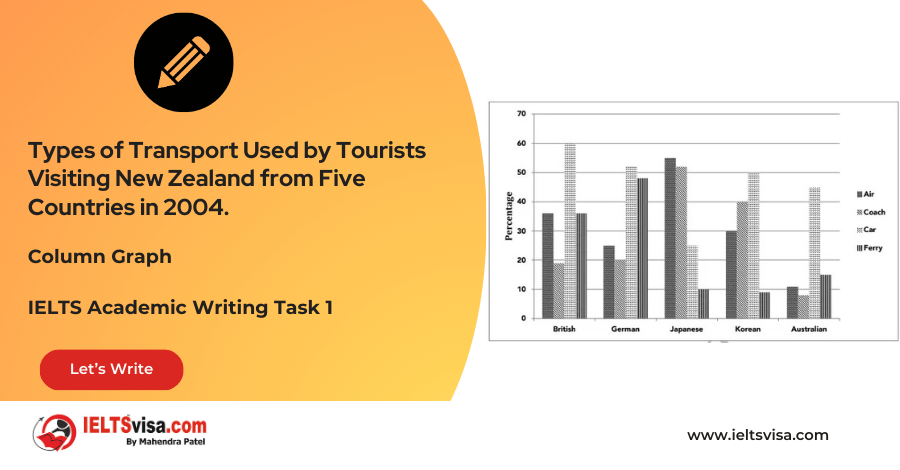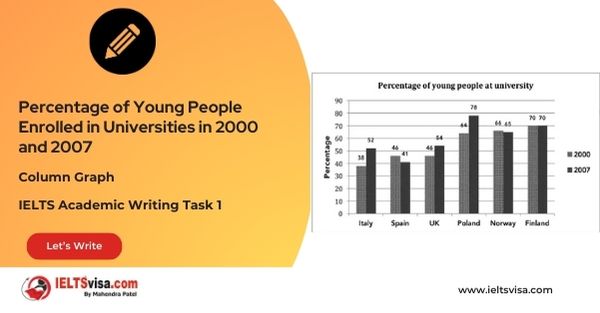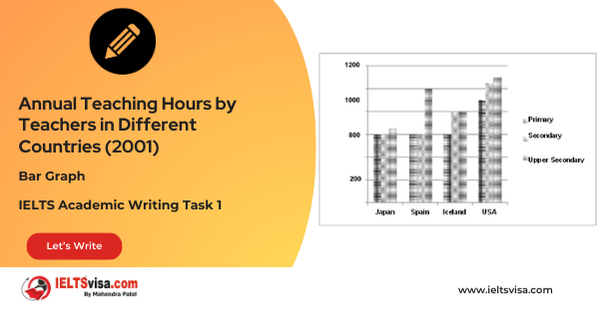The percentages of homeschooled students in Some Country in 1999-2004.
IELTS Academic Writing Task 1 - Table
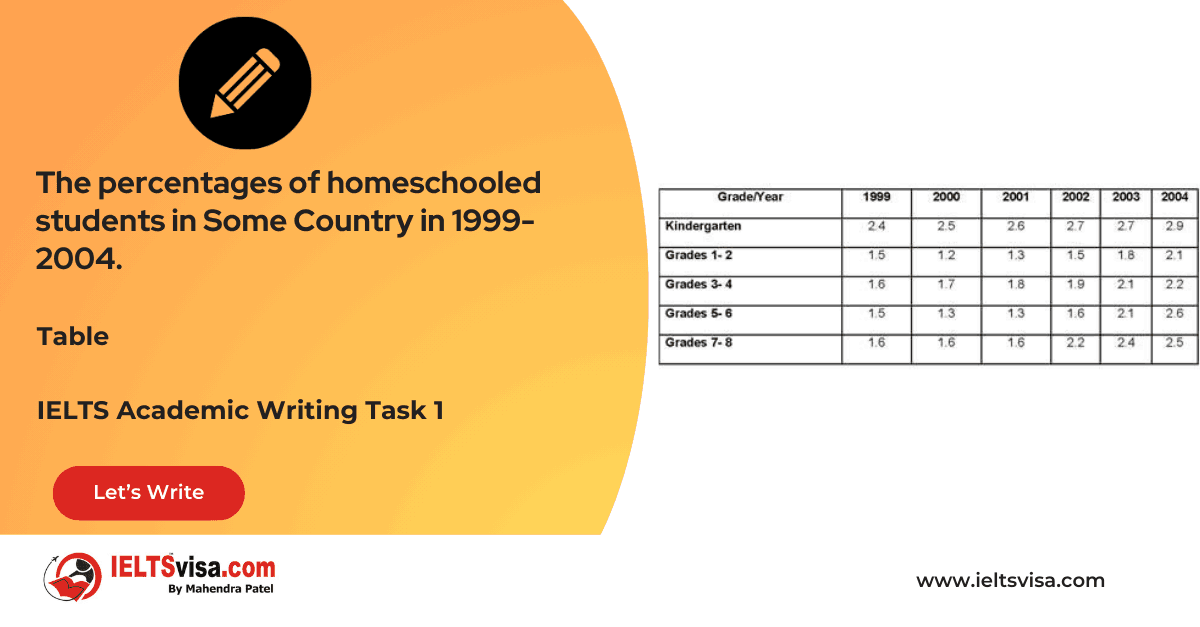
IELTS Writing Task 1 Question
The percentages of homeschooled students in Some Country in 1999-2004.

Common Questions for the Process Table
1. Diagram Type : Table
2. Title : Percentages of Homeschooled Students in Some Country (1999-2004)
3. What are the units of measurement? Percentages of students
4. Who : Education researchers, policymakers, and educators
5. When : 1999 to 2004
6. Where : Some Country
7. Topic : Trends in home schooling across different grade levels
Detailed Process and Observations
Summary of Data: The table compares the percentage of students who were homeschooled in different grade levels in Some Country between 1999 and 2004. It is evident that kindergarten students had the highest percentage of home schooling, and this trend continued throughout the period. In contrast, the percentage of homeschooled students varied across other grade levels, with some showing steady increases and others fluctuating.
Kindergarten Students: Kindergarten students had the highest homeschooling percentage, increasing from 2.4% in 1999 to nearly 3% in 2004.
Grades 3-4: The percentage of homeschooled students in grades 3-4 steadily increased from 1.6% to 2.2% during the period.
Other Grades:
-
- Grades 1-2: The percentage started at 1.5% in 1999, decreased to 1.2% in 2000, and then rose above 2% by 2004.
- Grades 5-6: The percentage was steady at 1.5% initially, then remained around 1.3%, before reaching 3% in 2004.
- Grades 7-8: The percentage remained stable at 1.6% until 2001 and then increased to 2.5% by 2004.
Sample Answer
The table provides information about the percentage of homeschooled students in Some Country from 1999 to 2004 across different grade levels.
Overall, the percentage of homeschooled students increased across all grade levels from 1999 to 2004.
It is clear that kindergarten students had the highest proportion of homeschooling, and this trend continued throughout the period. Their percentage increased steadily from 2.4% in 1999 to nearly 3% by 2004. Similarly, students in grades 3-4 showed a consistent rise, starting at 1.6% and reaching 2.2% by the end of the period.
In contrast, the percentages of homeschooled students in grades 1-2 and 5-6 fluctuated over time. Students in grades 1-2 began at 1.5%, dropped to 1.2% in 2000, and then increased to above 2% by 2004. The percentage of homeschooled students in grades 5-6 remained around 1.3% until 2004, when it peaked at 3%. Lastly, students in grades 7-8 had a relatively steady percentage of 1.6% in 1999, which climbed to 2.5% by 2004.
Top 5 Vocabulary
| Vocabulary | Meaning | Synonyms | Examples | Vocabulary Type |
|---|---|---|---|---|
| Proportion | A part or share of a whole | Percentage, fraction, ratio | The highest proportion of homeschooled students was in kindergarten. | Noun |
| Trend | A general direction in which something is developing | Pattern, direction, movement | The trend of homeschooling increased across all grade levels. | Noun |
| Steadily | In a regular and continuous manner | Gradually, consistently | The percentage increased steadily from 2.4% to 3%. | Adverb |
| Consistent | Unchanging over time | Stable, constant | Grades 3-4 showed a consistent rise in homeschooling. | Adjective |
| Fluctuated | Changed irregularly | Varied, wavered | The numbers fluctuated over time for grades 1-2. | Verb |
| Peaked | Reached the highest point | Climbed, rose, culminated | The percentage peaked at 3% in 2004. | Verb |
| Relatively | In comparison to others | Comparatively, somewhat | Grades 7-8 had a relatively steady percentage. | Adverb |
| Percentage | A part per hundred | Rate, proportion | The percentage of students increased gradually. | Noun |
| Grade level | Stage of school | Academic year, school level | The data compares different grade levels. | Noun Phrase |
| Homeschooling | Education at home | Home education, private tuition | Homeschooling became more popular over time. | Noun |
| Increased | Grew or rose in amount | Rose, escalated, climbed | The number of homeschooled students increased over time. | Verb |
| Declining | Becoming smaller or less | Decreasing, dropping | The interest was declining after a certain age. | Adjective |
| Remained | Stayed in the same state | Stayed, persisted | The petrol station remained unchanged. | Verb |
| Unchanged | Not altered | Stable, fixed | Some areas remained unchanged over time. | Adjective |
| Slightly | A little | Marginally, a bit | The figure increased slightly each year. | Adverb |
| Significantly | To a large extent | Considerably, markedly | The figures rose significantly in 2004. | Adverb |
| Overall | In general | Generally, broadly | Overall, homeschooling rates went up. | Adverb |
| In contrast | Opposite to something | Conversely, on the other hand | In contrast, grades 1-2 had fluctuations. | Phrase |
| Throughout | During the whole period | Across, during | This trend continued throughout the years. | Preposition |
| Data | Information in numbers | Statistics, figures | The data show a rise in all grade levels. | Noun |
| Stable | Not changing | Steady, fixed | The percentages remained stable in early years. | Adjective |
| Gradually | Slowly over time | Progressively, bit by bit | Numbers increased gradually from 1999. | Adverb |
| Compared to | In relation to | As opposed to, in comparison with | Compared to 1999, the figures in 2004 were higher. | Phrase |

Our Books
Master IELTS Speaking Part 1
IELTS Writing Task 1 Book
IELTS Writing Task 2 Book
Writing Task 1 Question Types
Practice IELTS Other Modules
IELTS Listening
The IELTS Listening test assesses how well you can understand spoken English in various contexts. It lasts about 30 minutes and is divided into four sections with a total of 40 questions. The listening tasks become increasingly difficult as the test progresses.
IELTS Academic Reading
The IELTS Academic Reading section assesses your ability to understand and interpret a variety of texts in academic settings. It is designed to evaluate a range of reading skills, including skimming for gist, reading for main ideas, reading for detail, understanding inferences, and recognizing a writer's opinions and arguments.
IELTS Speaking
The IELTS Speaking test assesses your ability to communicate in English on everyday topics. It lasts 11-14 minutes and consists of three parts: introduction, cue card, and a discussion based on the cue card topic.
IELTS General Reading
IELTS General Reading tests your ability to understand and interpret various types of texts. Here are some key areas and types of content you can expect to encounter in the reading section, along with tips for effective preparation.
IELTS Academic Writing Task 1
In IELTS Academic Writing Task 1, you are presented with a visual representation of information, such as graphs, charts, tables, or diagrams, and you are required to summarize, compare, or explain the data in your own words.
IELTS General Writing Task 1
In IELTS General Writing Task 1, you are required to write a letter based on a given situation. The letter can be formal, semi-formal, or informal, depending on the prompt. Here’s a breakdown of the key components to include in your letter
IELTS Academic Writing Task 2
In IELTS Academic Writing Task 2, you are required to write an essay in response to a question or topic. Here’s a guide to help you understand the essential elements of this task
IELTS Exam Tips
To succeed in the IELTS exam, practice regularly, familiarize yourself with the test format, improve your vocabulary, develop time management skills, and take mock tests to build confidence.
Grammer for IELTS
Grammar is the foundation of effective communication in English. Understanding tense usage, subject-verb agreement, and sentence structure enhances clarity and coherence in writing and speaking.
Vocabulary for IELTS
Vocabulary plays a crucial role in the IELTS (International English Language Testing System) exam, especially in the Speaking and Writing sections. Here’s an overview of why vocabulary is important and how it impacts your performance
RECENT IELTS SAMPLES QUESTIONS AND ANSWERS
Task 1 – Diagram – A conference hall built in 1981 and planned for 2020
20:00 Start Pause Stop [df_adh_heading title_infix="IELTS Writing Task 1 Question" use_divider="on"...
Task 1 – Table – For a university tutor describing the information shown.
20:00 Start Pause Stop [df_adh_heading title_infix="IELTS Writing Task 1 Question" use_divider="on"...
Task 1 – Bar-Charts – The way people of Some country invested their money during the years 2001 – 2006
20:00 Start Pause Stop [df_adh_heading title_infix="IELTS Writing Task 1 Question" use_divider="on"...
Task 1 – Diagram – Rainwater Harvesting and Conversion to Drinking Water in an Australian Town.
20:00 Start Pause Stop [df_adh_heading title_infix="IELTS Writing Task 1 Question" use_divider="on"...
Task 1 – Column graph – Percentage of Young People Enrolled in Universities in 2000 and 2007.
20:00 Start Pause Stop [df_adh_heading title_infix="IELTS Writing Task 1 Question" use_divider="on"...
Task 1 – Bar Graph – Annual Teaching Hours by Teachers in Different Countries (2001)
20:00 Start Pause Stop [df_adh_heading title_infix="IELTS Writing Task 1 Question" use_divider="on"...

